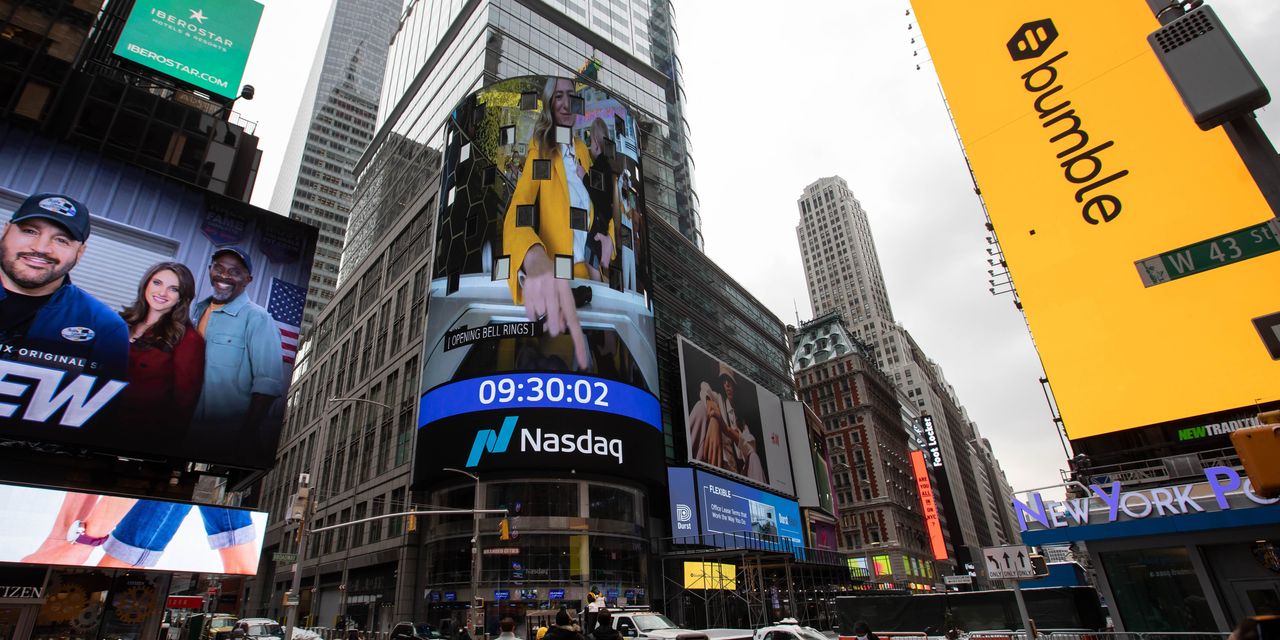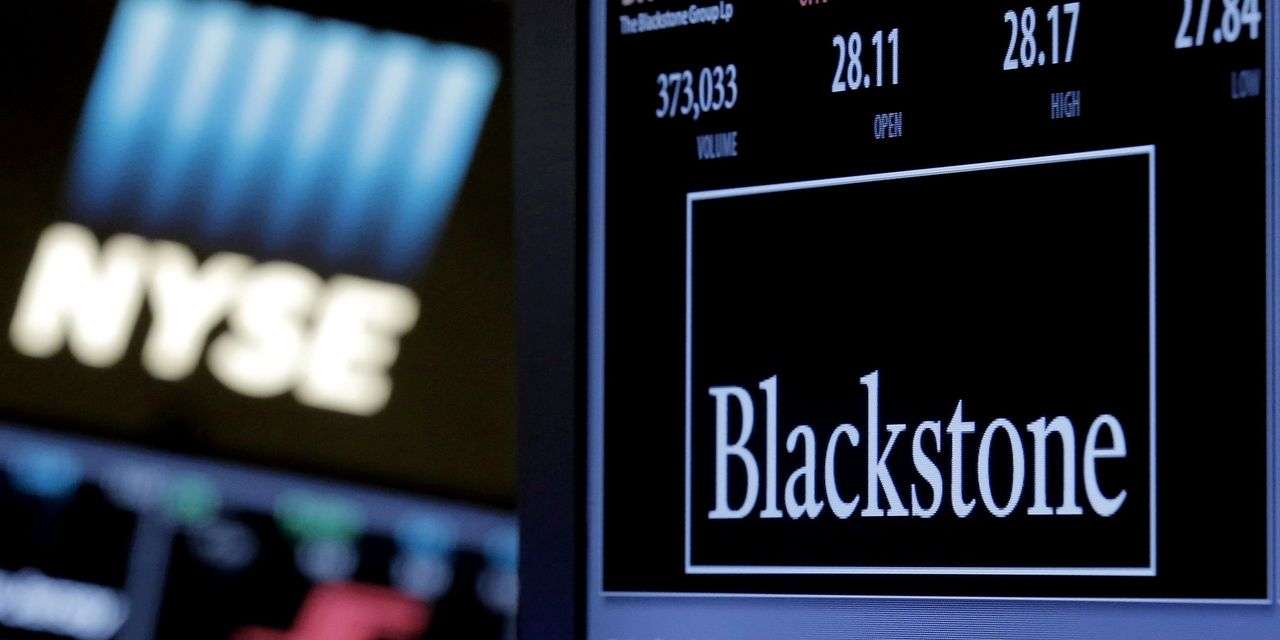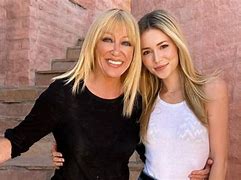In the 2001 biographical drama “A Beautiful Mind,” schizophrenic genius John Nash wasn’t much of a charmer with the ladies. But when it came to probability, he was a master. His advice to boost your chances at finding love? Ignore the most beautiful person in the room.
Now might be a good time to apply that logic to stock picking. All signs point to a strong quarter coming up for dating-app companies. But the market hasn’t treated them equally. Online-dating giant
Match Group
MTCH 0.13%
is up 62% over the past year, while smaller player
Bumble
BMBL -0.71%
has shed 25% since its February initial public offering. Bumble is now trading at just 9.4 times enterprise value to forward sales, with Match at a significant premium at 14.6 times. Heading into earnings, investors might want to take a page from Mr. Nash’s book.
There is a reason Match has outperformed. It not only owns the top grossing dating app in the world in Tinder, but seven of the top 10 dating apps by consumer spending in the U.S. as of the first quarter, according to data from Sensor Tower. Bumble’s namesake app may be the No. 2 dating app in the world, but its other app, Badoo, is much less popular.
That balance of power isn’t likely to shift in Bumble’s favor any time soon. Despite its mission to empower women to make the first move, a recent survey from Evercore ISI found a higher percentage of women say they are using Tinder than Bumble. It also found that of males and females using both apps, a significantly higher percentage of both groups reported being more satisfied with Tinder. Meanwhile, Match’s relationship app Hinge continues to gain traction. Morgan Stanley analyst Lauren Schenk notes that Hinge could surpass Bumble in terms of monthly active users in the next 18 to 24 months if current growth rates hold.
In the near term, though, both Bumble and Match are likely to be beneficiaries of a waning pandemic and consumers’ pent-up desire to connect. Between the two, Bumble’s underperformance this year leaves more room for upside.
Both Evercore ISI’s survey and a May survey from Morgan Stanley found 87% of respondents plan to maintain or increase their usage of dating apps over the next several months. Further, Evercore ISI found 53% of those who don’t pay currently said they would consider paying for online-dating apps in the future.
Morgan Stanley found pent-up demand for dating apps to be greatest among millennials and higher-income individuals, a positive because those groups have the highest propensity to pay for apps they use. While Tinder continues to be in higher demand than Bumble, both apps can win. Evercore ISI found single adults in the U.S. use an average of three dating apps at any given time, with paying users on average paying for two apps at the same time. It also found that, after Tinder, Bumble is the most highly used app among females.
Morgan Stanley notes its survey data was most bullish for Match’s Hinge and Bumble, whose more upscale user bases are showing pent-up demand, likely making them strong near-term spenders. The firm notes Bumble’s mix of user growth and recent pricing changes, combined with higher monetization rates for the industry as a whole, should lead to a positive setup for paying-user growth in the second quarter. Positively, Sensor Tower data show U.S. Bumble installs held steady over that period from the first quarter.
Despite Hinge’s soaring growth, Match has yet to break out its economics, suggesting it isn’t yet a major revenue driver for the overall business. Meanwhile, it is worth noting that while Tinder’s demand in the U.S. looks especially strong, that app has significant exposure in countries with low vaccination rates such as India and Brazil.
In the long run, it is hard to argue that Match isn’t online dating’s hottest commodity. But there is a difference between forever love and what works best “for now.”
Write to Laura Forman at laura.forman@wsj.com
Copyright ©2020 Dow Jones & Company, Inc. All Rights Reserved. 87990cbe856818d5eddac44c7b1cdeb8






